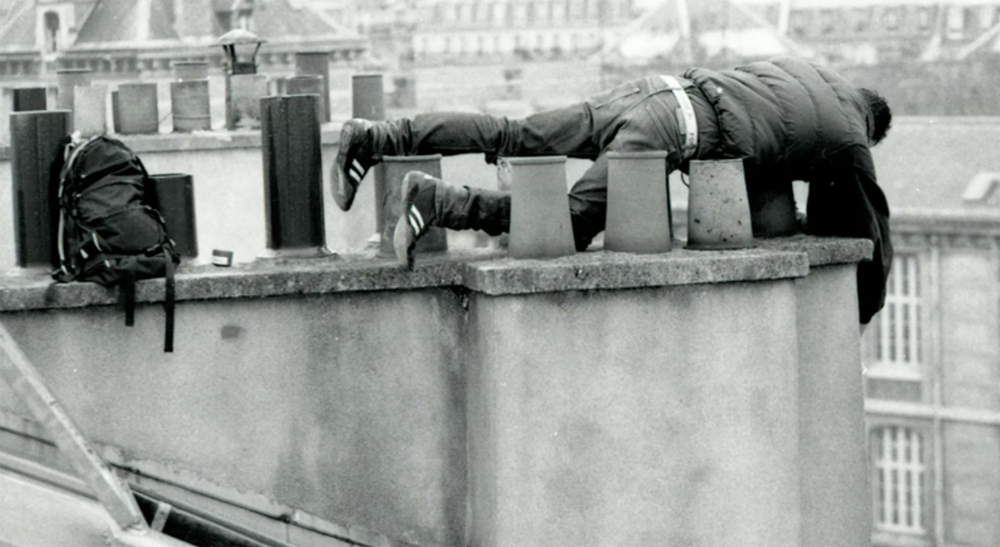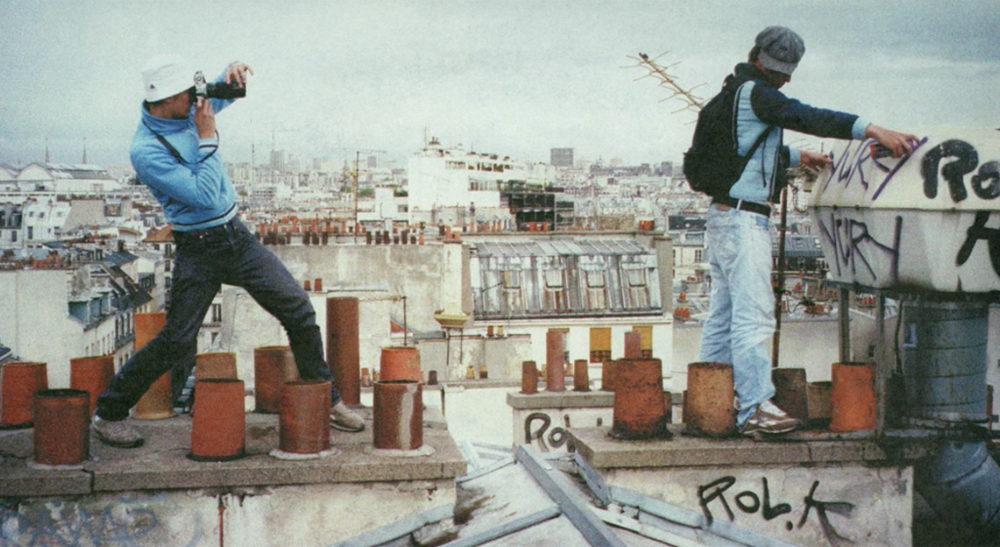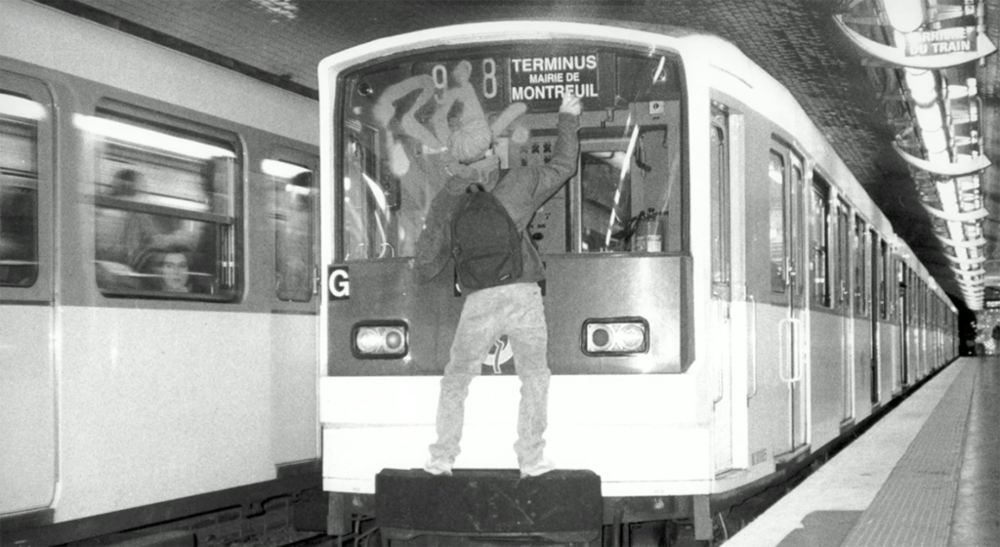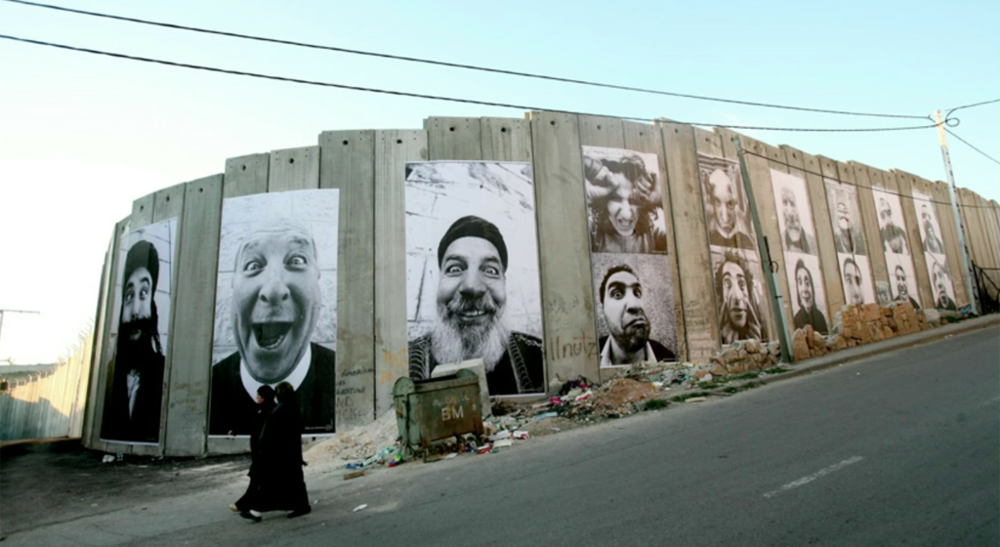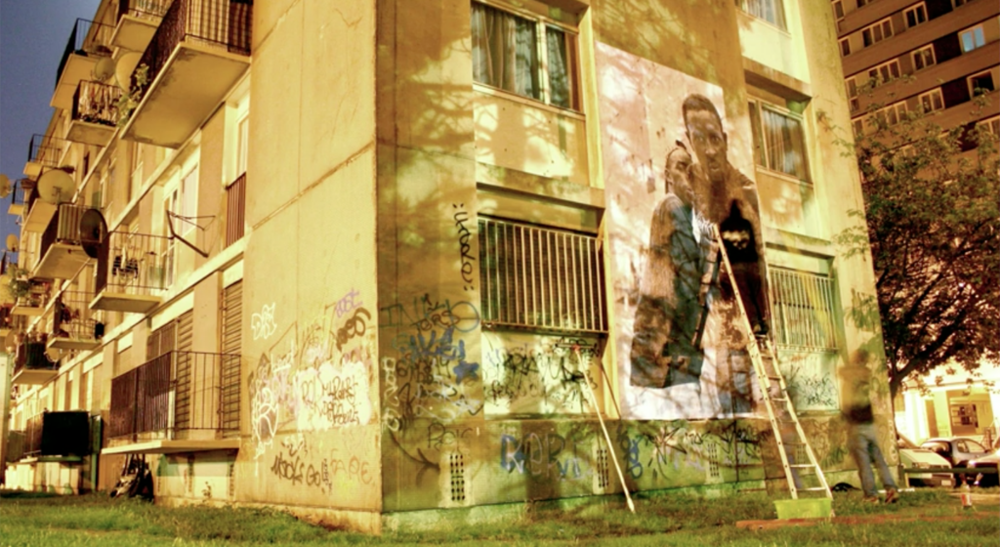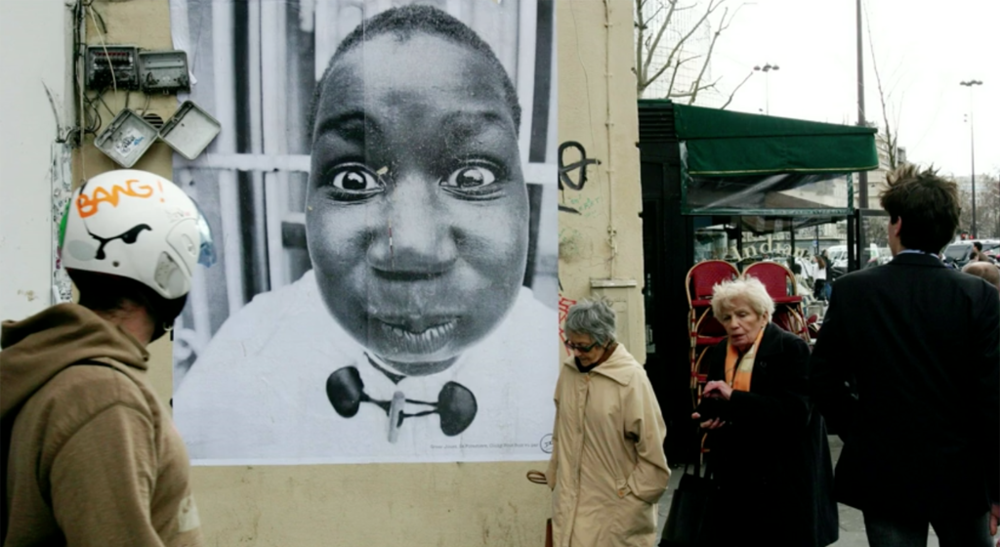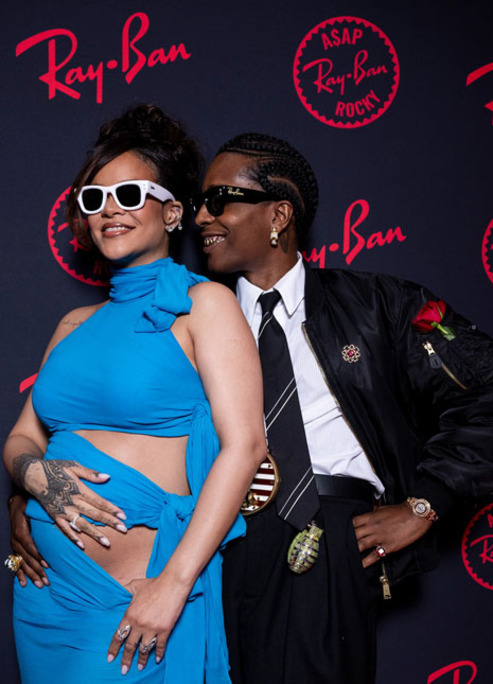Larger Than Life Artiste: Jr – The Man Behind The Massive Monochromatic Photos
While the streets of Rio de Janeiro buzz from the inflow of tourists for the 2016 Olympic games, thereâs another, unusual main attraction thatâs been causing many heads to turn upon visiting the cityâs center. On the roof of a large, 25-story residential complex, we see what appears to be the illusion of an Olympic athleteâSudanese high jumper Mohamed Younes Idrissâspringing over it. While near the Barra neighborhood, thereâs a depiction of an unidentified diver with his wings stretched in near perfect form leaping into the ocean in front of him.
Many have come to marvel, but still they wonder who in fact is responsible for these mysterious pieces of art. The pseudonym behind them all is JRâa French photographer/artiste considered to be the âCartier-Bresson of the 21st century.â Heâs single-handedly figured out a way to keep his true identity concealed, while keeping his street art very much revealed.
 JR’s High Jump installation at the Olympics 2016 in Rio De Janeiro Brazil
JR’s High Jump installation at the Olympics 2016 in Rio De Janeiro Brazil
JR started out as a teenage graffiti artist (with the moniker âFace 3â) on the streets of Paris with merely a camera that he found in a subway station and a keen interest on making his mark on public spacesâe.g., rooftops, bus stations, and building façades. Eventually his desire to grow as an artist led him all through out the side streets of Europe. What made JR unique was his uncanny ability to not necessarily use spray paints and stencils as most graffiti artists do, but instead do something known as âflypost.â
Flyposting is the act of using wheatpaste to glue advertisementsâmostly controversial and illegalâonto outdoor structures. JR found this to be the ultimate way of expression and reaching the masses. Most of his pieces depict a person from a lower class in a raw state of emotion, challenging societyâs preconceptions on freedom and identity. Heâs believes that, âIn the street, we reach people who never go to museums.”

At some point in his career, he began to realize that these posters could be as grand in size as the structures theyâre displayed on. This is the direction his projections have gone in for the past decade or so. With the backing of government officials, and the support of intricate, construction scaffolding arrangements, JR now uses enormous monochromatic photographsâshot with a 28mm wide-angle lensâthat are stretched and applied onto metal rods for public display.
In 2006, JR created his piece titled, âPortraits of a Generationââseveral portraits of young residents from the housing projects in Paris that were on display in middle-to-upper class neighborhoods. The project, clearly illegal, was then deemed official by the state of Paris after they decided to post them onto the Paris City Hall.
In 2007, he collaborated with Marco Berrebi for his boldest, most dangerous design yet, called âFace2Faceâ. The task consisted of enormous photos of Israeli and Palestinian citizens facing one another on either side of the Separation Barrier. Many people doubted this feat could be done, as he had to bypass heavy security in order to cross over between the two quarreling states. The prints were then reposted in his beloved French capitalâParis.

On October 20th, 2010 JR received $100,000 for winning the 2011 edition of the TED prize (Technology, Entertainment, Design). He then used his winnings to fund his world famous âInside Out Projectâ, which became a global art movement designed for anyone, anywhere in the world to become their own artiste. JRâs goal was to âchange the worldâ by highlighting the people and their individual stories. Since the start of his initiative, 1,200 participants have had the opportunity to take and print their own portraits, and install them wherever they pleaseâjust as JR does in his own right.
The âInside Out Projectâ has grown into what is now a society that spreads all across the globe with each passing year. The project has even allowed JR to take his endeavors to New York City where heâs opened up yet another studio for himself and others to post their work in. Since then, heâs created interactive landscapes on the floor of Times Square, the promenade of the Lincoln Center, and the abandoned hospital on Ellis Island.
His work has even traveled across the Sahara Desert to broken bridges in the slums of Kenya, back to Paris to the pyramids out front of the Musée du Louvre and most recently to the favelas of Rio de Janeiro in Brazil. He considers himself to be an âurban artivistâ delivering socially challenging messages to major cities everywhere, while simultaneously granting everyone an artistic outlet. JR is the true definition of an artiste.



